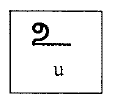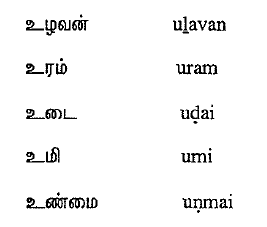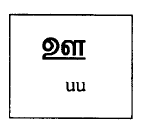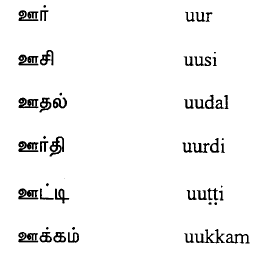There are twenty five questions for the learners to check their understanding of the above write-up. Choose the correct answer for the question.
What is the name of the temple conducted by Rajarajan in Tanjavur?
Natarajar temple
Kankai Konta coolapuram
Tancaip periya kooyil
Which is the earliest grammar in Tamil?
Thirukkural
Tholkappiyam
Nannul
Which of the following is correct?
Spoken Tamil differs from written Tamil and vice-versa
Spoken Tamil and written Tamil are one and the same
Which is the Tamil novel that won the Gnana Peeth Award?
Pavai vilakku
Unam
Cittirappavai
Arattupal in Thirukkural could be somewhat equated with:
Dharma
Artha
Saivism
What is the equivalent expression in Tamil for Good morning in English?
Vanakkam
Varukiren
Siva Siva
What is Nannul?
It is a drams
It is a novel
It is a grammar book
Which of the following is correct?
Spoken Tamil can be derived from written and vice-versa
Spoken Tamil cannot be derived from written Tamil
Written Tamil cannot be derived from spoken Tamil
Natakam or Kuthu is mainly concerned with:
Dance
Musical Instruments
Musical Notes
A celebrated work of Buddhism is:
Manimekalai
Thiruvacakam
Sivakacintamani
Pancali Sapatam was written by:
Bharathi
Ilango
Akilan
The Raja Rajan award was given to Suthananta Bharati for his work:
Chittirappavai
Bhartha Sakthi
Kannan Pattu
Kancippattu sarees are produced from the town called:
Tanjavur
Kanchipuram
Madras
The very first novel published in Tamil was:
Pirathapa Muthaliar Sarithiram
Kallo Kaviyamo
Pavai Vilakku
The saint Ilango wrote the epic:
cilappatika:ram
manime:kalai
kampara:ma:yanam
The Tamil language belongs to the:
Central Dravidian sub-group
North Dravidian sub-group
South Dravidian sub-group
The recorded history of the Tamil literature can be broadly grouped under:
five periods
seven periods
four periods
The author of Thirukkural is:
Tholkappiyar
Thirumular
Thiruvalluvar
The Nayanmars are the saints of:
Saivism
Jainism
Vaishnavism
A collection of eight anthologies of the Sangam classics is called:
Pathuppattu
Ettuthokai
Kalithokai
The Tamil festival connected with the harvest is:
Deepavali
Pongal
Karthikai
Ancient Tamil Nadu was divided into three major regions called:
Cheranadu, Cholanadu, Pandiyanadu
Cholanadu, Ramnadu, Pandiyanadu
Cheranadu, Ramnadu, Pandiyanadu
The phrase, Poy vaukiren is used:
at the time of meeting
at the time of eating
at the time of departure
An anthology of ten poems in Sangam Classics is named:
Pathuppattu
Mullaippattu
Pathirruppathu
Married women in Tamil Nadu wear:
Valayal as the symbol for marriage
Tali as the symbol for marriage
Mukkuthi as the symbol for marriage

![]() represents the sound.
represents the sound.











